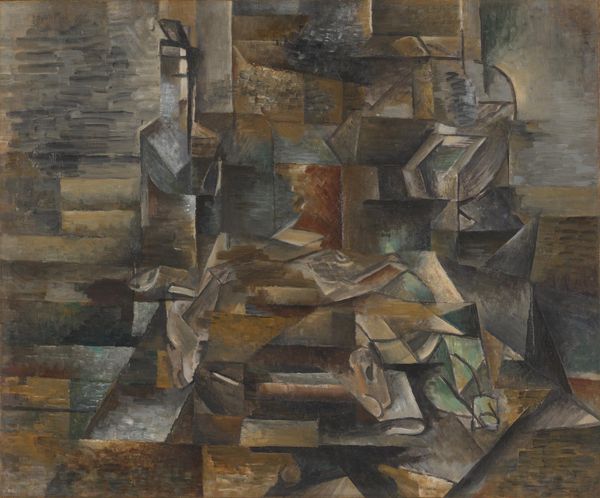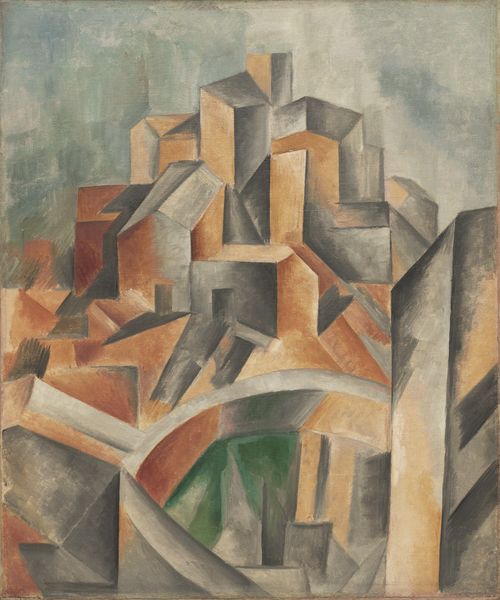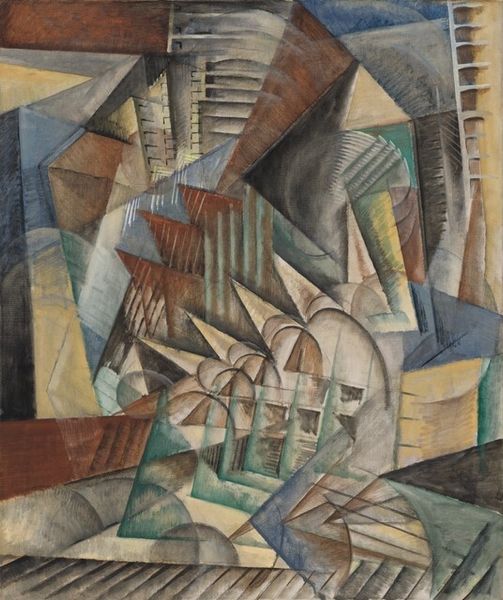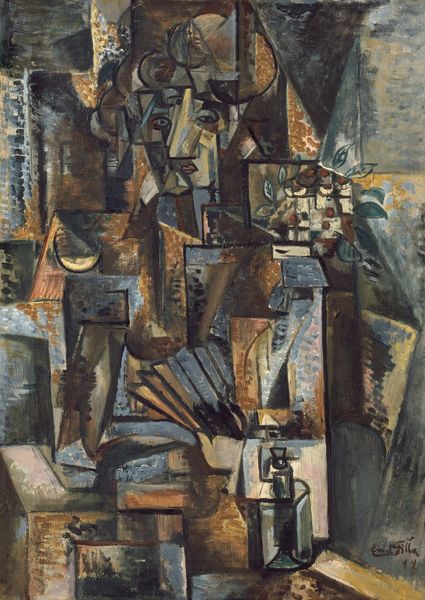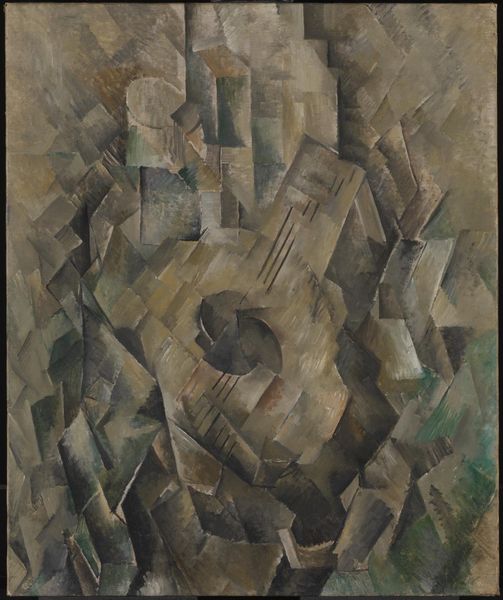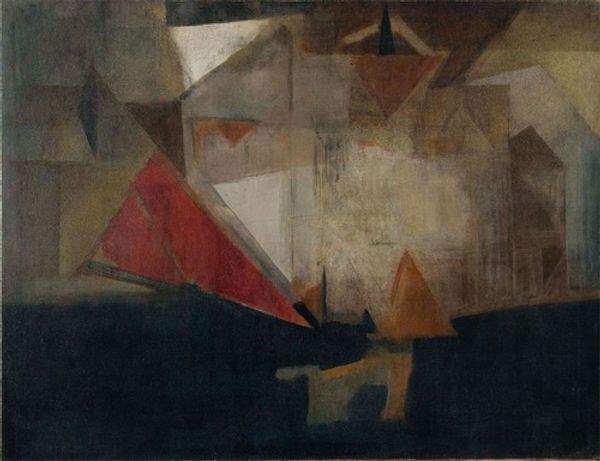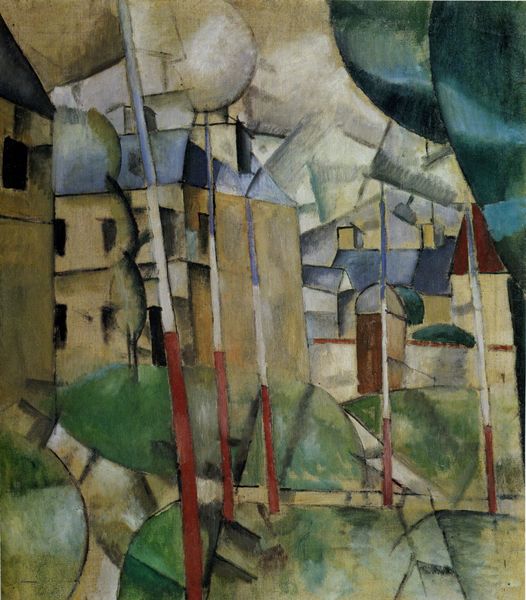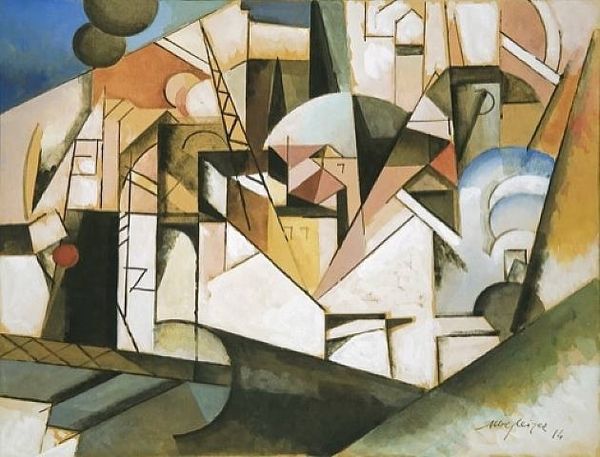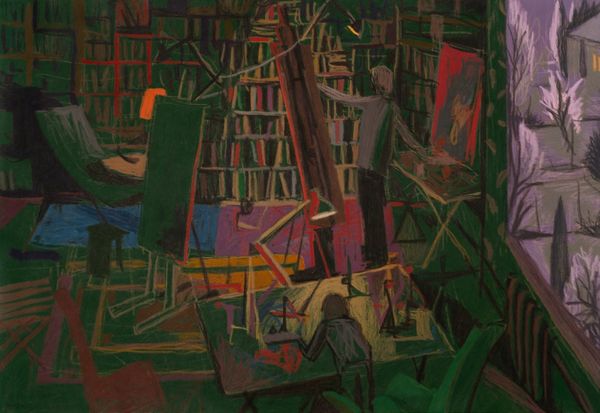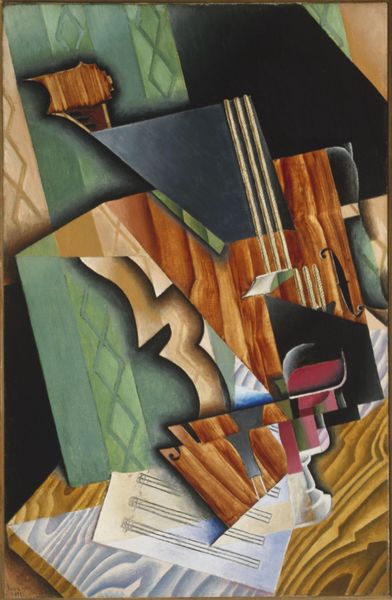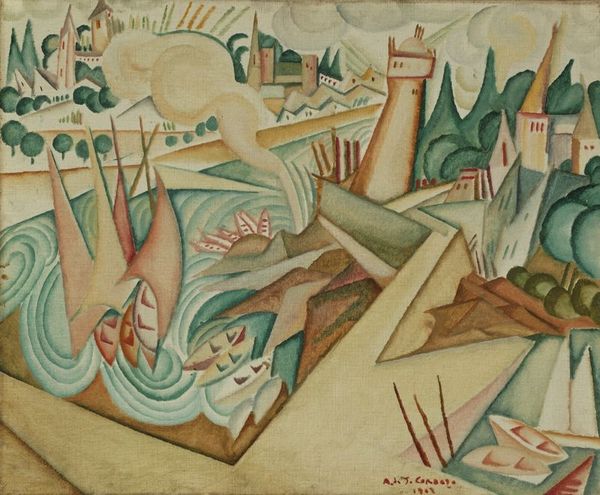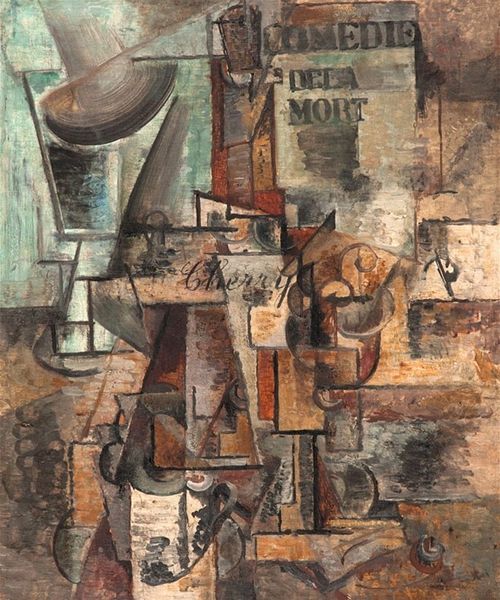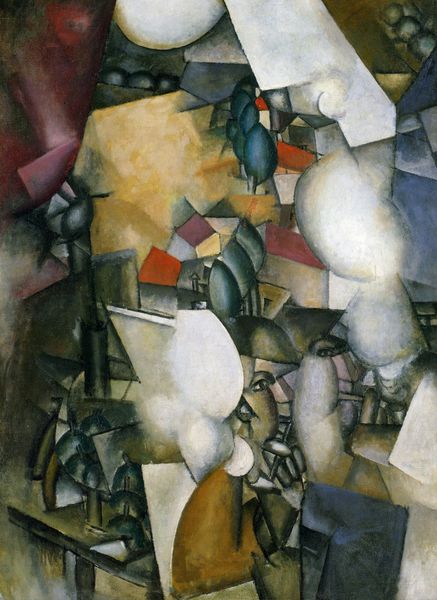
oil-paint
#
cubism
#
oil-paint
#
charcoal drawing
#
form
#
oil painting
#
geometric
#
cityscape
#
modernism
Dimensions: overall: 40.6 x 48.2 cm (16 x 19 in.) framed: 54.9 x 63.2 x 4.4 cm (21 5/8 x 24 7/8 x 1 3/4 in.)
Copyright: National Gallery of Art: CC0 1.0
Art Historian: The composition feels immediately dense and subdued, almost oppressive with its muted tones. What do you make of it? Art Historian: We’re looking at Georges Braque’s oil on canvas work from 1909, titled "Harbor". It represents a key moment in the development of Cubism, of course, and how artists grappled with representing reality in a new way. Art Historian: The geometric facets do that. The harbor is rendered as almost shattered into discrete shapes. But there’s still this compelling sense of… familiarity. As if memory itself is fractured into planes of perception, revealing multiple viewpoints. Art Historian: It is a really interesting period. Consider the broader context. Think about early 20th century Europe and the societal shifts occurring during those years and how artists respond through representing and re-constructing their worlds and their understanding of them. Art Historian: I see so many potential readings. Water. Building. Sail. But Braque dismantles them, showing us how constructed they are to begin with. Look at that mast slicing right through everything; such stark geometry. Art Historian: Yes! He deliberately challenges traditional perspective. Artists in prior eras represented scenes realistically, mimicking real life and sometimes improving upon them! Here Braque shows the underlying structure… almost like an architect’s rendering but of lived life instead of future proposals. Art Historian: There's almost a quality akin to collage, though of course done entirely with paint, a building up of the canvas from abstract shards. Do you believe he's more concerned with the act of perception or with deconstructing what harbors represented for people at the time? Art Historian: I’d say that is certainly both and, importantly, influenced by cultural understanding around harbor life at the time. He is challenging our conventions but representing at once the past, the present, and what would become the future. Art Historian: Thank you. I appreciate that historical context in thinking through the visual cues on the canvas. It does help unpack all these fragmented planes into what it could have represented when it first emerged in 1909! Art Historian: And now, standing here and contemplating these radical ideas, gives a whole other set of meanings as well. A painting lives with the world around it and within us.
Comments
No comments
Be the first to comment and join the conversation on the ultimate creative platform.

